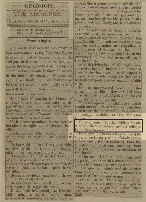 |
| [Top] [action] [action4] |
|
|
|
|
|
|
|
|
|
|
||||||
|
|
||||||
|
|
||||||
|
|
||||||
|
SUPER and SCROLL SUPER stands for ‘superimpose’ or ‘superimposition’. It is used to indicate writing that is supposed to appear on screen on top of the images. The are normally used to inform the audience of time and place. For example: |
||||||
|
|
||||||
|
|
||||||
|
|
||||||
|
|
||||||
|
|
||||||
|
If you want the words to scroll across the screen you should use the term SCROLL instead. If you want to superimpose a quote on the screen before the movie begins the Screenwriter’s Bible recommends this way: |
||||||
|
SUPER: |
|
You should not use SUPER when a character watches TV and the words appear on the TV screen. In that case better use a secondary heading to focus on the TV and write the words that appear there into the narrative. Example: |
||||
|
|
||||
|
Action Stacking If you have a lot of short, concise, one line paragraphs, you may choose to stack these paragraphs by leaving out one line feed (hard return):
|
||||
|
|
||||
|
The Screenwriter’s Bible doesn’t encourage its use, saying that most readers are used to the traditional way. It should go without saying that if you decide to do it, you should use it consistently throughout your script. |
||||
|
|
